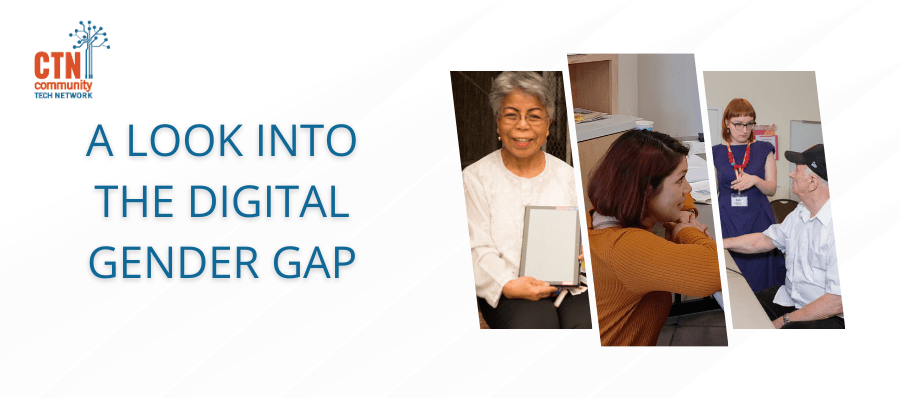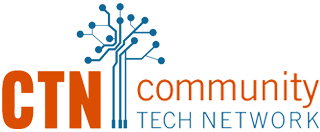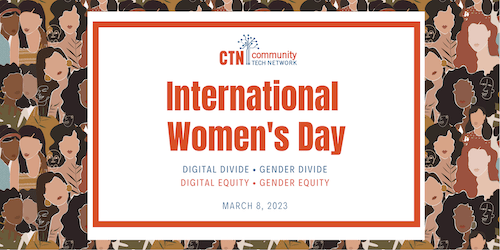When you think about women’s* rights, what’s the first thing that comes to mind? Probably not women’s access to technology. However, across the world, the U.S. State Department estimates (PDF) that 250 million fewer women are online than men. This gender digital divide limits women’s job opportunities and access to necessary resources, such as health information.
Why Are Women Offline? A Look into The Digital Gender Gap

According to a report from UNICEF (PDF) with gender digital divide statistics, over 50% of the world’s female population is offline. Various factors contribute to this gender digital divide. Sociocultural norms and entrenched sexism play a major role. A study by the Organization for Economic Co-operation and Development (PDF) reports that, in India and Egypt, one-fifth of women believe the internet is “not appropriate for them.” “The internet is often seen as a risk to the traditional social order. … Gatekeepers often control and monitor women and girls’ access and use of digital technology due to fears that it is not safe for them to be online, or that the internet or social media can have a corrupting influence on them.” In some communities, such as in rural India, the UNICEF study reports that women are legally banned from using mobile phones, and in other cases, they are prohibited by their families.
Affordability is also an issue. Many women across the globe are not financially independent and are unable to purchase their own devices. In parts of South Asia and sub-Saharan Africa, women rarely have their own smartphones and must often borrow those of male family members.
Education, of course, is a key component as well. According to the OECD study, 50% of women with no formal education said that they were not familiar with or comfortable using technology. In contrast, 85% of women with at least a high school degree or more said they were confident using the internet.
Why Is Improving Women’s Access to Technology Important?
Bridging the gender digital divide is crucial to promoting women’s rights, as well as their health, financial, and employment outcomes. In today’s society, technology is necessary for almost everything. Feeling ill? You can use a search engine to read about your symptoms, look up the hours of a local clinic, or schedule an appointment with a specialist. Hoping to find a new job? The internet allows individuals to search for jobs around the world. Or maybe you’ve already heard about employment opportunities in your community through word of mouth. But are you prepared digitally?
The UNICEF study reports that over 90% of today’s jobs include digital components, and knowing how to use technology is a must. And according to the OECD report, “[Digital technologies] help empower women … by giving women the possibility to earn (additional) income, increase employment opportunities, and access knowledge and general information. This benefits women and their families, thus enhancing the lives and well-being of people and of society as a whole.” If 600 million more women get connected to the internet in three years, the global GDP is estimated to rise between $13 and $18 billion.
Bridging the Digital Gender Divide, So What Can Be Done on gender digital divide?
Problems such as these require complex solutions. But there are many steps that societies can take now. Worldwide, 129 million school-age girls are out of school, as “poor families often favor boys when investing in education.” Compulsory education would ensure that girls stay in school and learn the basic digital skills needed in today’s society.
Additionally, leaders can work with girls and their parents to change perceptions and inform them that the internet is not a corrupt space, but rather one that can greatly benefit their daughters and families. Greater protections can also be put in place to prevent cyberbullying and online harassment and stalking. Many adolescent girls are offline because they believe that the internet is unsafe. According to UNICEF, “52% of young women globally have experienced some form of digital harm, and 87% of them believe the problem is getting worse … [but] 25% of young women and girls who are harassed online do nothing about it, citing reasons such as ‘it’s not worth reporting’ and ‘authorities don’t care.’” Women in China and Mexico list wanting to avoid harassment online as one of the main reasons for not owning a cellphone, according to the OECD.
Other techniques to address the digital divide in general would benefit women and girls as well. These include improving network coverage and infrastructure in rural areas, providing digital literacy training, and lowering the cost of internet and devices (either through government subsidies or greater competition).
* The term “women” in this post refers broadly to individuals who have been assigned female at birth. Future posts will cover in more depth the digital divide faced by transgender and nonbinary folks.


Comments are closed.